Chosen Family: JJ Levine’s ‘Queer Portraits’ series
In his Queer Portraits series, Montreal photographer JJ Levine set out to document his own community. He captured the story of a much bigger one.

Share
JJ Levine was eight years old when his mother bought him his first 35-millimetre camera. Levine was interested in photography, but at first only shot still lifes of dance shoes and tchotchkes. His mom suggested he try snapping people, too. At the time, his four siblings were in the process of establishing their own identities as young adults. Some of them identify as queer, and Levine studied their lives with great interest. “I had this unique opportunity to see my siblings have unconventional friendships and relationships,” says Levine, who is trans. “When I came of age, living in Montreal, I had them, too—and then I documented them.”
The series started as a term project for Levine’s fine arts degree at Concordia University, documenting his siblings, friends and lovers. Now, at 150 photos, Queer Portraits is Levine’s most robust collection to date, and a tender, critically lauded chronicle of queer domesticity. The project was exhibited at Montreal’s McCord Stewart Museum in 2022. The Image Centre also recently purchased the photograph “Becca and Miwa” through the Canada Now Photography Acquisition Initiative, which highlights Canadian artists whose work touches on issues of identity and belonging. “Queer Portraits is a reference to the history of portrait photography, which usually meant going to a studio in your best outfit and having your picture taken—and, for a long time, was reserved for straight, wealthy, cisgender people,” Levine says of the ongoing project. “It ended up being more of a personal archive than I initially thought it would.”
The photographs feature exes, friends, and Hubert and Joah—his partner and child. As a result, the shoots look like garden-variety hangouts among close-knit people: they involve hours-long chats and rifling through subjects’ wardrobes. Often, there is food. But where Queer Portraits deviates from pure documentary is in its deliberate construction: the lighting is artificial, the furniture is arranged just so and, sometimes, even the homes are borrowed.
Occasionally, the scenes themselves are years old, plucked and reconstructed from Levine’s memory. “I’m not catching people at a random moment, or showing you their unmade bed or pile of dirty dishes,” Levine says. “I’m showing you a person in clothes they feel really good in—maybe the best version of them.” In a sense, Levine’s collection of portraits mirrors a model of family that many queer folks can relate to: one born of loving curation rather than genetic obligation.
In the following pages, Levine tells the stories behind his intimate portraits. He is aware that his portrayals of non-monogamy and creative co-parenting dynamics in Queer Portraits might seem like political cris de coeur on behalf of the queer and trans communities at large. They are, but they’re also simply the stories Levine knows. “This was my way of showing care,” Levine says. “I just wanted to make beautiful images of the people I love.” Proud, cherished, safe in their homes. In that way, they are entirely subversive.
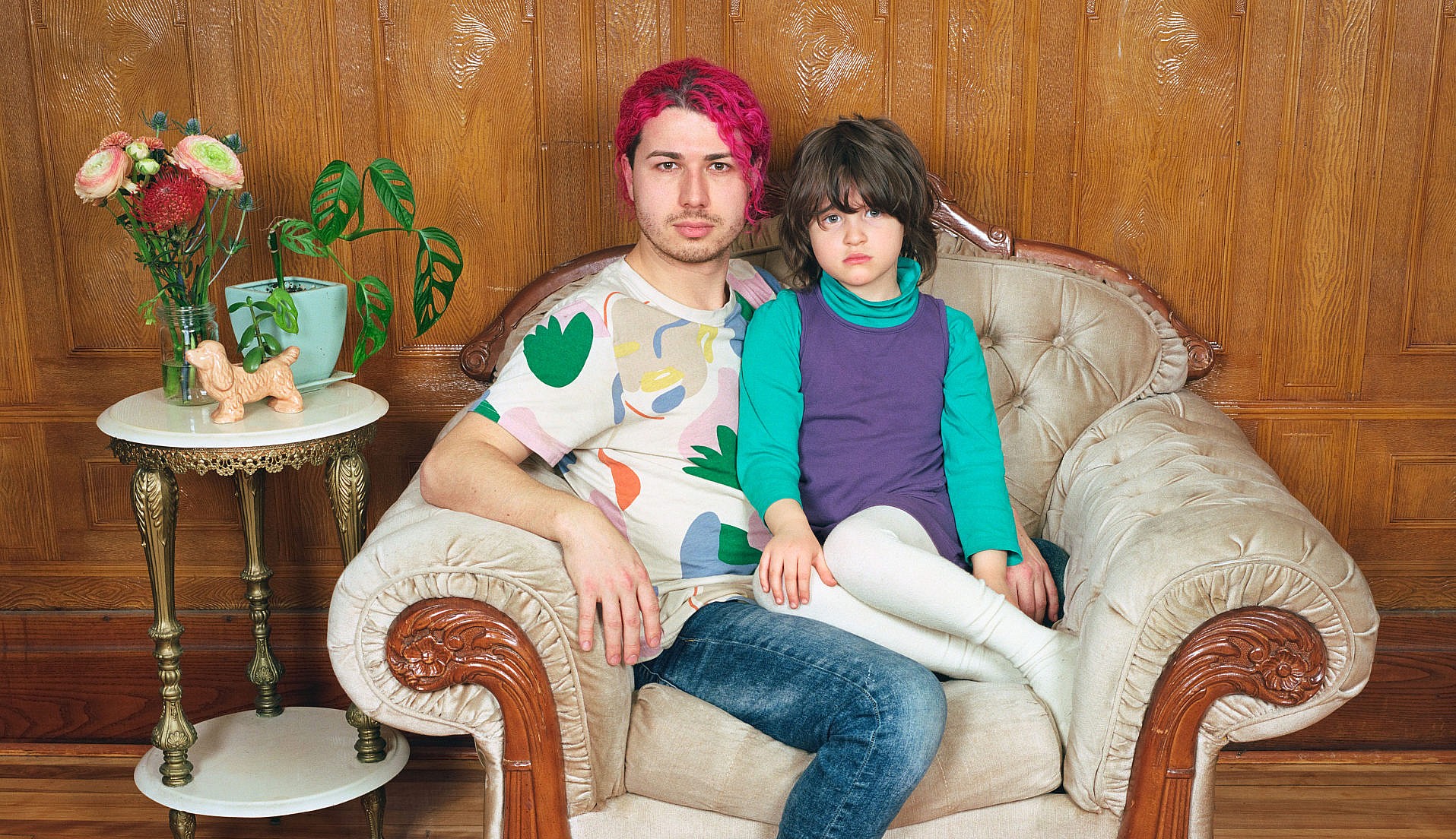
Hubert and Joah, 2021
“This image of Hubert (my partner) and Joah (my daughter) is from the middle of the pandemic. During lockdown, we were all forced into these isolated family structures. Hubert and Joah’s dynamic became more like that of a parent and child. That time also changed my work: I couldn’t go into anyone else’s homes, so I took this shot in our place. It’s so funny: people said, ‘Wow, that’s someone’s grandmother’s house,’ and I was like, ‘That’s my furniture.’ ”

Hubert, 2019
“This was the first time I photographed Hubert. There was no plan to have his cat, Adele, in the shot, but she kept jumping on his lap. After she died in 2021, people left us flowers and wrote notes to her. One said, ‘You ruined all of our puzzles during the pandemic, but you brought so much light into our home.’ One person even lit a candle for her.”
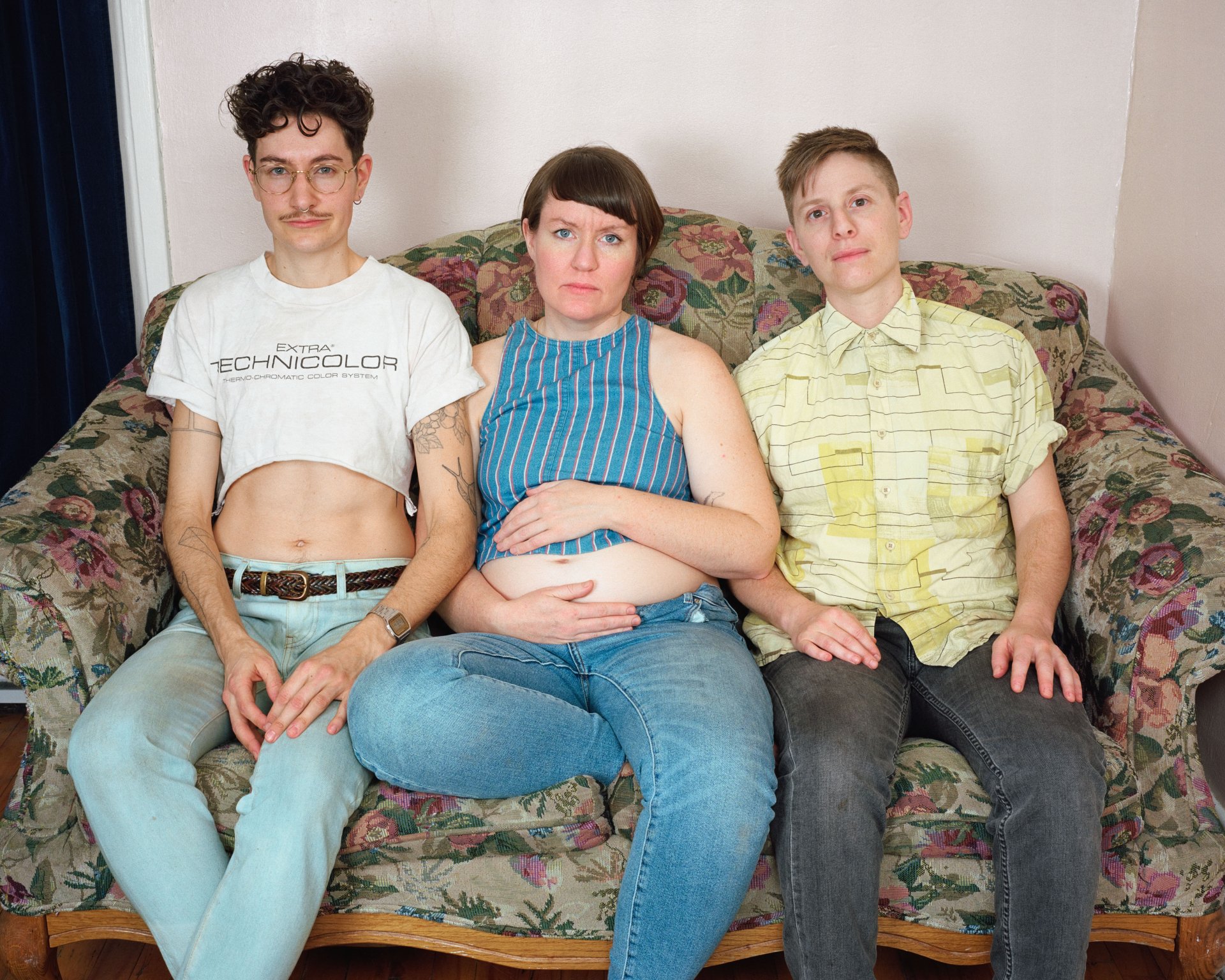
Family, 2020
“I moved in with Bronwen (centre) and Cee (right) in the early 2000s. We were more than roommates; we took care of each other. We were living together when Bronwen and I had our first children. I was like, ‘How does anybody do this without friends around to, like, hold their baby or let them take a shower?’ It was confounding to me.”
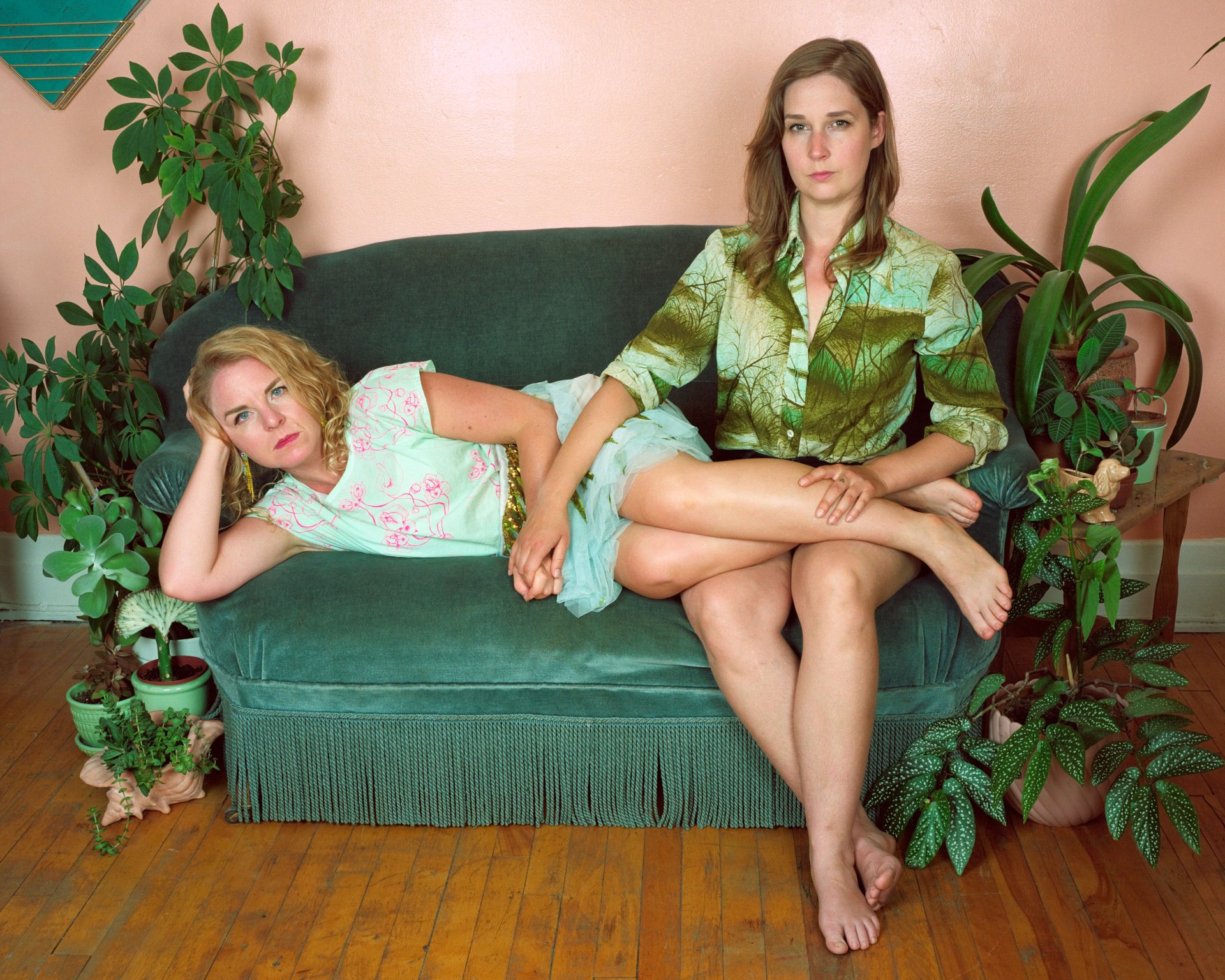
Crystal and Harley, 2019
“This photograph features femme-on-femme love—but sometimes, people ask Crystal and Harley if they’re sisters or best friends. This image makes explicit that these people are in a serious, long-term relationship with each other—one that’s not frivolous or for anyone else’s benefit. It’s like they’re saying, ‘Our identity is not for you to consume.’ ”
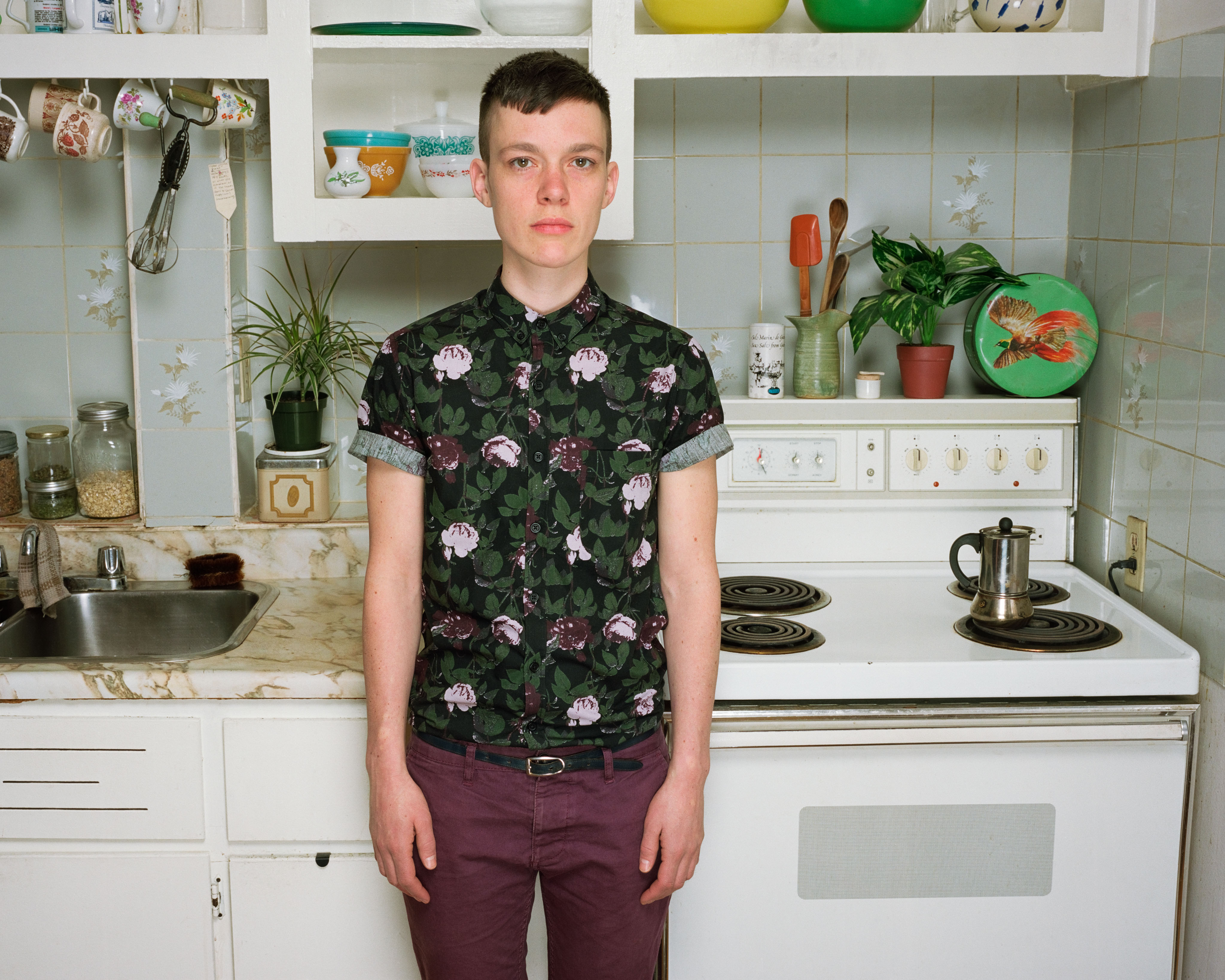
Oliver, 2015
“Oliver was my high-school sweetheart. We broke up in 2002 and we’ve been good friends ever since. I’ve photographed Oliver more than anyone, maybe. This was taken in their kitchen. The shoot was actually planned for the previous day, but it took so long for me to set up that we just decided to go to bed and shoot in the morning. The space was so tiny that I was perched on the kitchen table.”
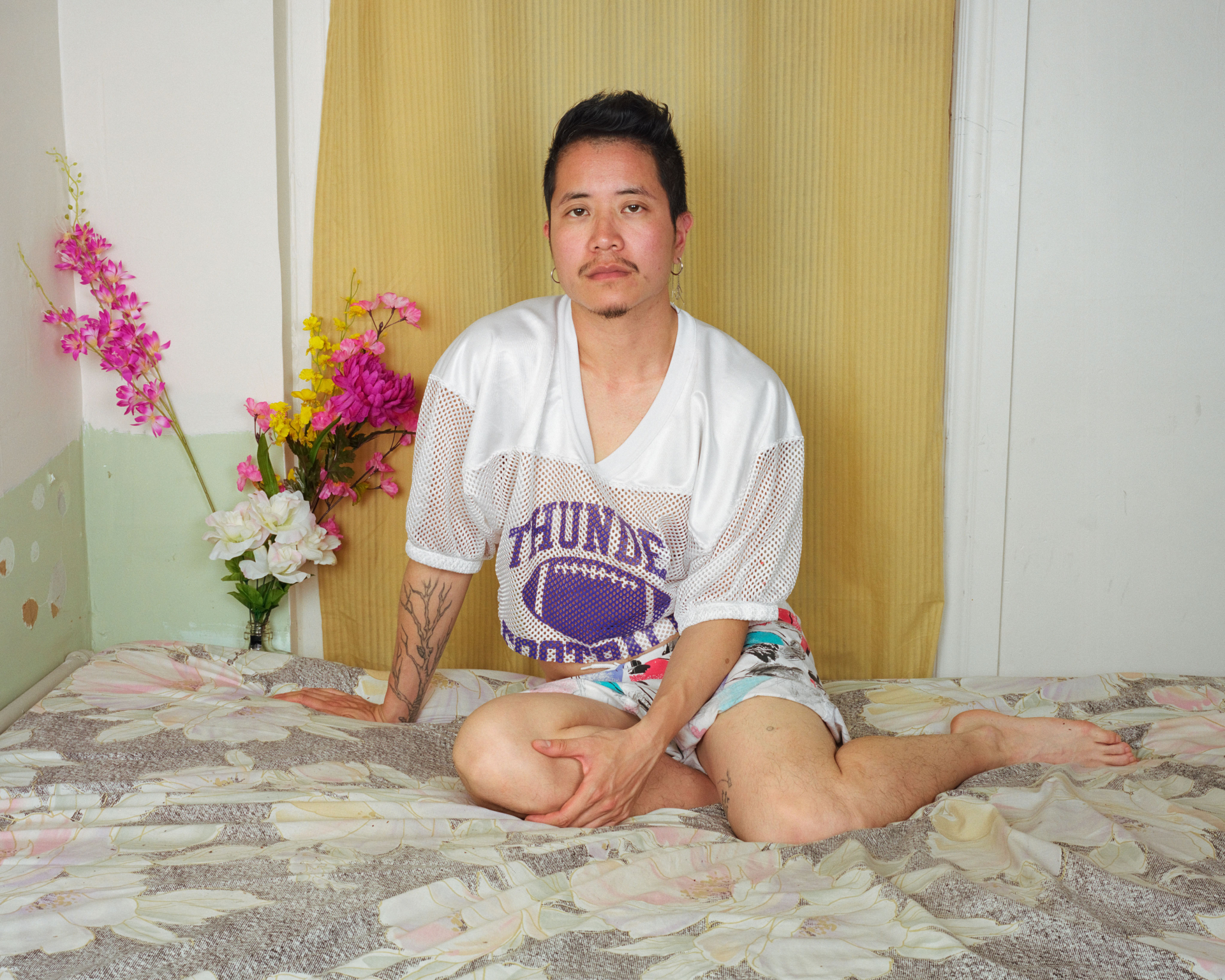
Felix, 2015
“We’ve been friends, and extremely sporadic lovers, for 15 years. After a lunch date, Felix and I went back to his new apartment. He hadn’t set up his stuff up yet, so I found this little spot with a tiny bit of green and wedged these amazing fake flowers in the corner. I had him try on a bunch of different outfits, and this is the one he felt good in.”

Becca and Miwa, 2019
“Miwa (right) was with Becca when we shot this image, but they’re not a couple anymore. I also have a lot of images of my exes. For me, the concept of chosen family encompasses the close bonds we as queer people have with our exes. You can be in a specific kind of romantic dynamic, which can then shift into a friendship.”
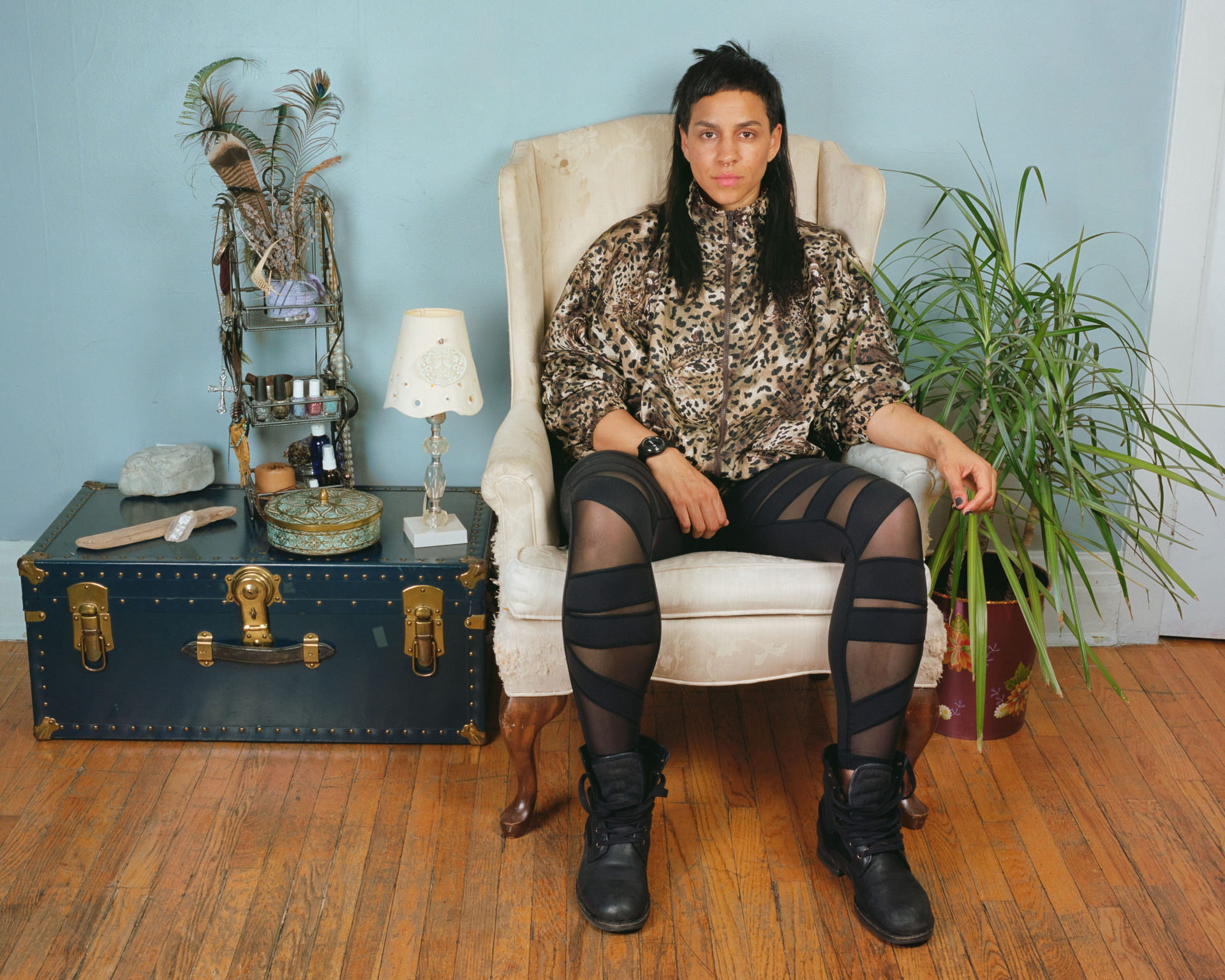
Lee Lee, 2015
“I met Lee Lee around 2009 or 2010. They’re a dancer—and very much an extrovert—and we used to go out to parties and queer events together. We also connected through our creative jobs. The majority of my friends are interested in art, but they don’t have artistic careers. One of the first things my partner, Hubert, and I bonded over was our interest in analog photography.”
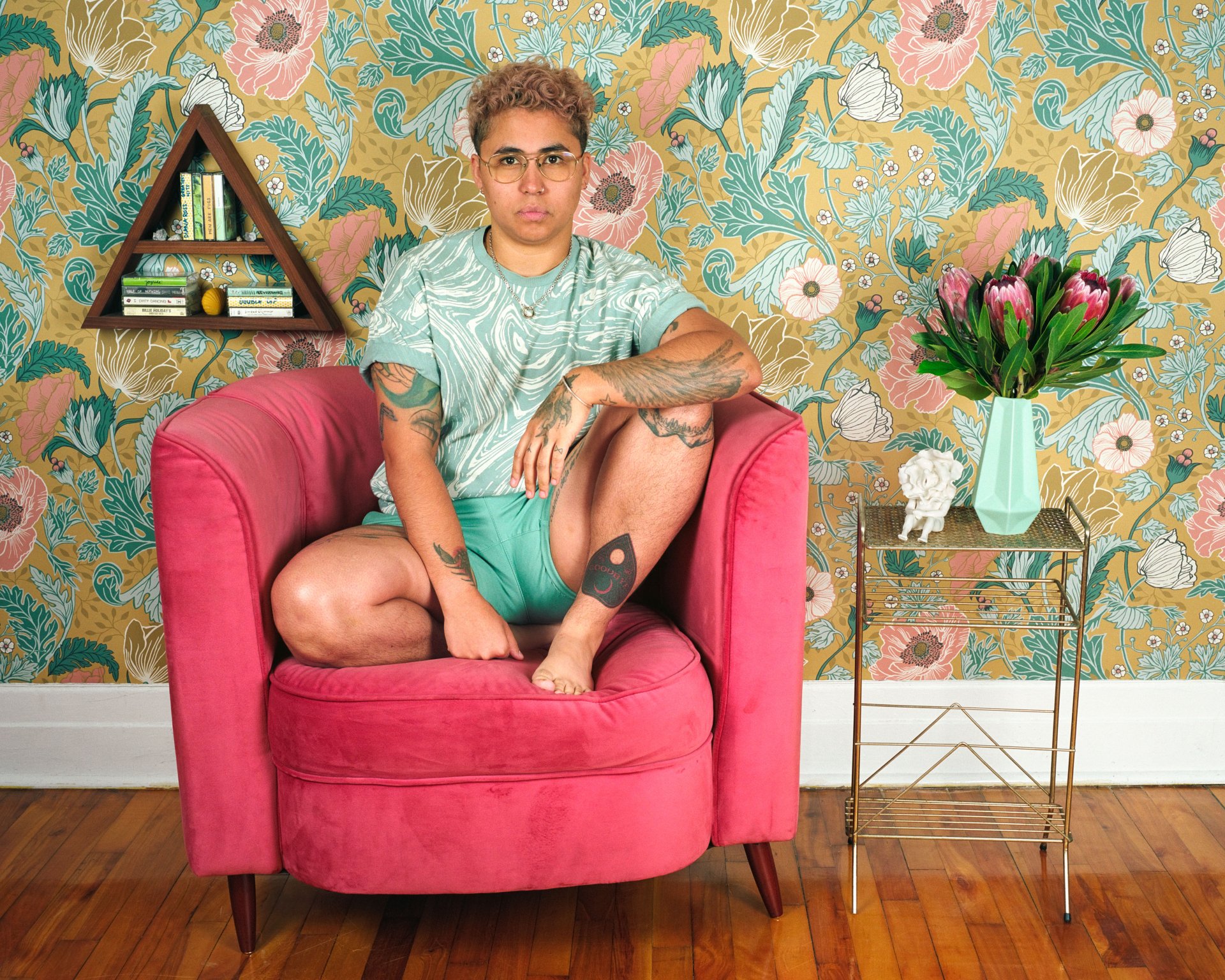
Miwa, 2021
“This image is one of the few from Queer Portraits that I didn’t take in the subject’s space—I shot it in another friend’s apartment. I brought in all the furniture and wallpapered the room with Hubert. Miwa is always down to do weird things. They even helped me pick out the cassette tapes in the background.”
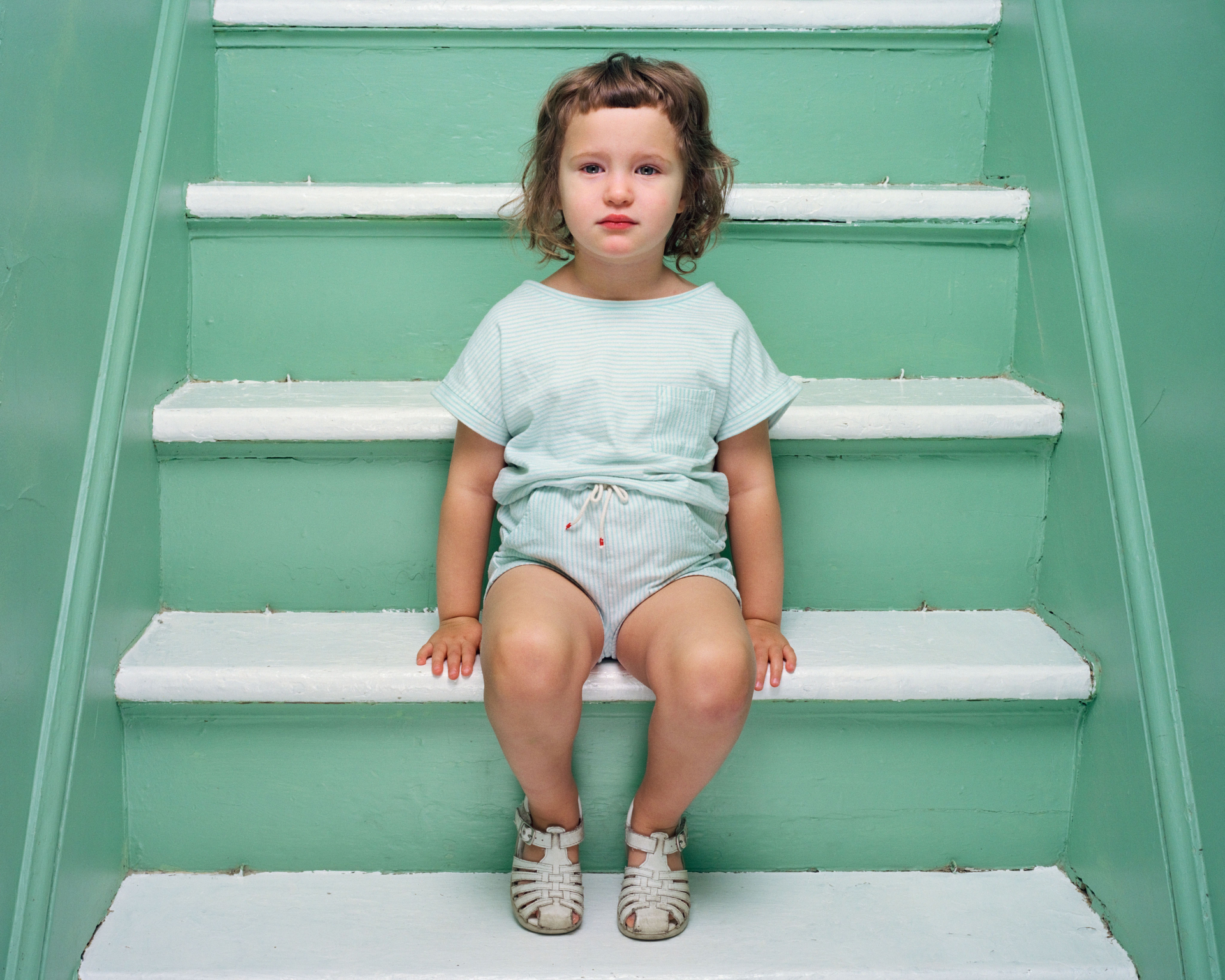
Joah, 2019
“This shot recreates a moment that took place after my separation from Harry, Joah’s other parent. It wasn’t always smooth sailing then. I had moved into another apartment, and Joah was with me for half of the week. One day, I was putting on my shoes at the bottom of the steep stairs at the entrance to my apartment. I remember Joah was just sitting there waiting, and so patiently. I was struck by how calm she was. I had to get used to single parenthood. This image recreates a moment when things were starting to get more settled.”
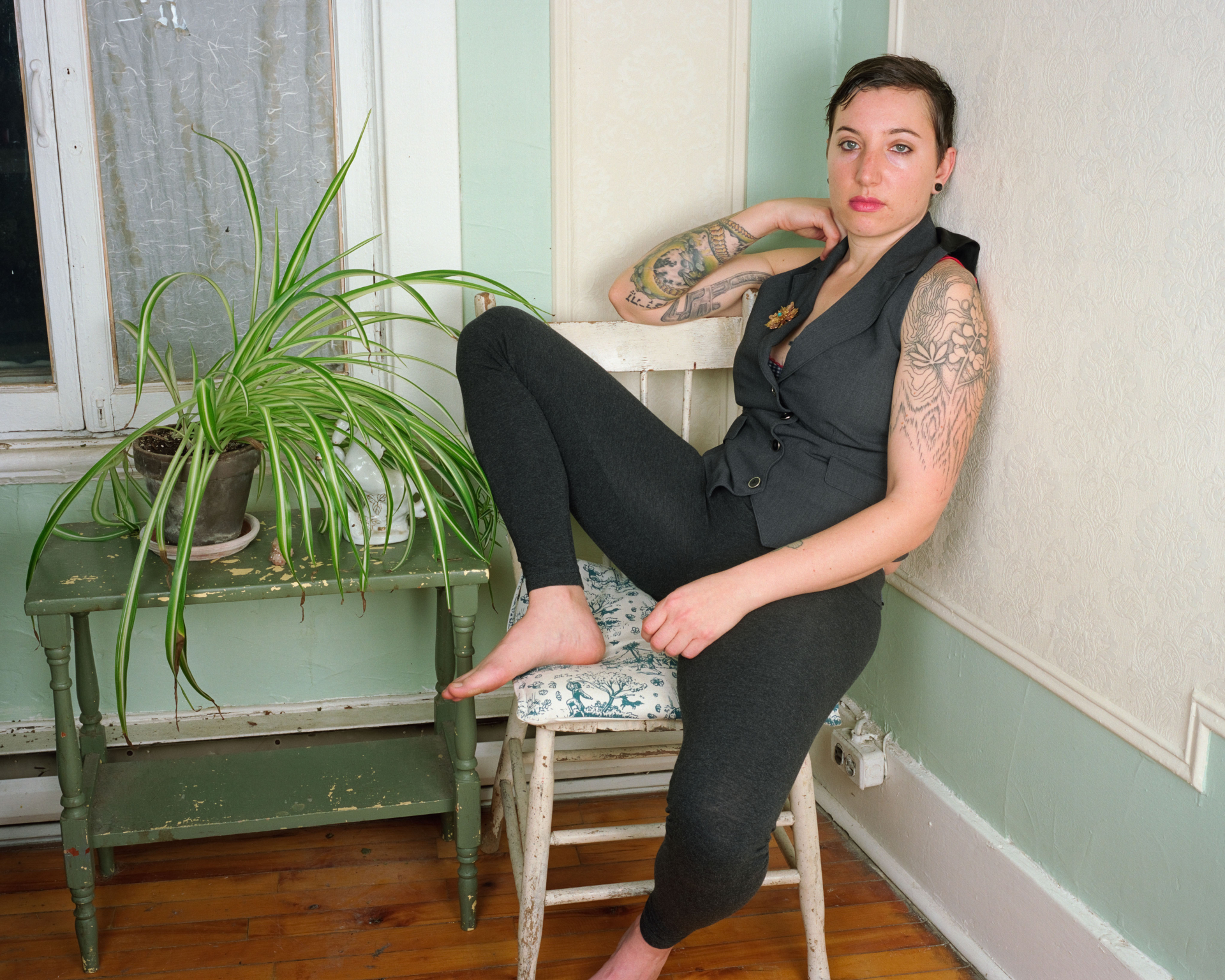
Mica, 2015
“I met Mica when they moved to Montreal. We used to go camping together. They now live in California, but we’re still good friends.”
This article appears in print in the February 2023 issue of Maclean’s magazine. Buy the issue for $9.99 or better yet, subscribe to the monthly print magazine for just $39.99.
